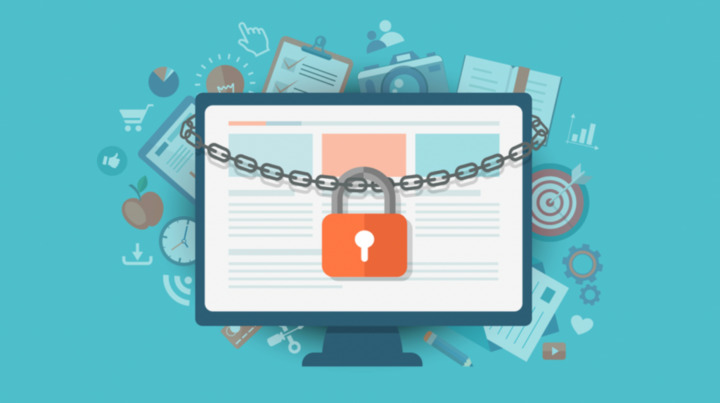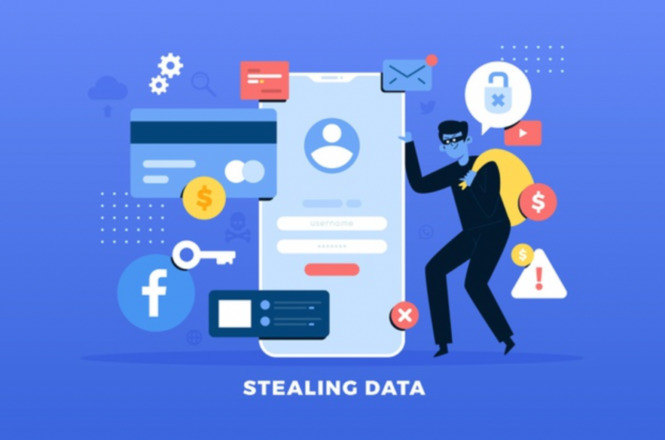The Alarming Reality: Data Loss Statistics You Need to Know

Data loss prevention is a critical aspect of info security. But in today’s digital landscape, where data breaches and cyber threats are prevalent, it has moved to the forefront. Thus, understanding information loss statistics can shed light on loss incidents’ frequency, causes, and consequences, highlighting the need for robust measures to ensure safe Internet usage. This article will provide an overview of information loss statistics and its significance in info security and discuss tools and best practices for preventing data loss.
An Overview of Data Loss Statistics

Data loss incidents continue to pose significant risks to businesses and individuals alike. And so, understanding the current trends and statistics related to information loss can provide valuable insights into the magnitude of the problem and the need for robust information leakage prevention measures.
Frequency and Severity of Data Breaches
Data breaches have become increasingly common, as witnessed by numerous high-profile incidents that have made headlines recently. Furthermore, according to various reports and studies, the frequency and severity of breaches are rising. For example, the Identity Theft Resource Center reported a total of 1,108 breaches in the United States in 2022, exposing over 3 billion records. This represents a significant increase compared to previous years, underscoring the persistent threat of info loss incidents.
Common Causes of Data Loss

The loss can occur for various reasons, with human error, cyber attacks, and system failures being common causes.
Human Errors
Some examples of human error causing digital info leakage are:
- Accidental deletion: It occurs when a user unintentionally deletes important files or information. It can happen for various reasons, such as selecting the wrong file to delete, deleting a file without realizing its importance, or mistakenly formatting a drive.
- Misconfiguration happens when a user makes an error while configuring a system or application, leading to information leakage. For example, misconfiguring a backup process can result in losing info that was supposed to be backed up.
- Insider threats: This type of human error involves deliberate actions by an insider, such as an employee or contractor, that cause info loss. This can happen for various reasons, such as financial gain, revenge, or espionage. Examples of insider threats include intentionally deleting or modifying data, stealing information, or installing malware.
Cybersecurity Accidents
Another major cause of digital info loss is a cybersecurity incident:
- Malware attacks: Malware is software type designed to harm or disrupt computer systems. Malware attacks can cause info loss by corrupting or destroying files, stealing sensitive info, or hijacking a system.
- Ransomware attacks: Ransomware is a kind of malware that encrypts a user’s files, making them inaccessible, and demands payment in exchange for the decryption key. Ransomware attacks can cause information leakage if the user chooses not to pay the ransom or the decryption key does not work.
- Data breaches: A breach occurs when an unauthorized party gains access to a system or network and steals sensitive information. The breaches can cause loss by compromising confidential information, such as personal, financial, or intellectual property.
Hardware Failure
- Hard drive failure: Hard drives are the primary storage devices in most computers. However, they can also fail for various reasons, such as wear and tear and mechanical or electronic failure. Hard drive failures can cause data leakages by making the info inaccessible or by corrupting the info stored on the drive.
- RAID failure: RAID (Redundant Array of Independent Disks) is a technology that combines multiple hard drives to improve performance and info redundancy. RAID failures can cause info leakage if one or more hard drives in the array fail, making the info inaccessible or corrupt.
- Power outages: Power outages or electrical surges can cause hardware failure or corruption, leading to information leakage. For example, if a computer writes data to a hard drive when the power goes out, the information may become corrupted or lost.
Software Failure
- Operating system errors: Operating system errors can cause info loss by corrupting or deleting files or making the system unstable and unable to access or recover information.
- Software bugs: Software bugs or programming errors can cause information leakage by corrupting or deleting files or causing the system to crash or become unstable.
- Corruption: Data corruption can occur for various reasons, such as software bugs, hardware failure, or power outages. It can also cause information loss by making it unreadable, inaccessible, or unusable.
Consequences of Info Loss

Data leakages can have severe repercussions for both businesses and individuals, impacting various aspects of their operations, reputation, and legal obligations. Therefore, understanding the consequences of information loss is crucial to emphasize the value of implementing robust prevention measures and ensuring safe internet usage.
Financial Impacts
Data breaches can result in significant financial losses, which include legal expenses, regulatory fines, customer compensation, and potential lawsuits. According to research conducted by IBM, the average total cost of a breach in 2021 was $4.24 million. EAs a result, even small businesses can experience reputational damage and financial losses due to breaches. Moreover, they can have long-term effects on their financial stability and sustainability.
Reputational Damage
Info loss incidents can cause lasting reputational damage to organizations. For example, customers and stakeholders may lose trust in an organization that fails to protect their information, leading to a damaged brand image and decreased customer loyalty. In addition, negative publicity, social media backlash, and loss of business opportunities can further compound the reputational damage, leading to the potential loss of customers and business relationships.
Legal and Regulatory Consequences
Data leakages can also have serious legal and regulatory consequences. Thus, organizations may face legal actions and lawsuits from affected parties, resulting in costly legal expenses, potential damages, and negative publicity. In addition, information protection laws, such as the California Consumer Privacy Act (CCPA) and the General Data Protection Regulation (GDPR), impose strict obligations on organizations to safeguard personal information and notify affected individuals in case of a breach. Non-compliance with these laws can result in severe penalties, fines, and reputational damage, along with potential loss of business opportunities.
Operational Disruptions
Data loss incidents can disrupt normal business operations, resulting in downtime, productivity loss, and increased recovery efforts. Recovering lost information, restoring systems, and investigating the cause of the incident can be time-consuming and resource-intensive and lead to operational disruptions and financial impacts. In addition, business continuity and operational resilience can be severely compromised after an information loss incident, potentially leading to additional costs and delays in business operations.
Best Practices for Ensuring Data Loss Prevention

Information loss prevention requires a proactive approach and adherence to best practices to effectively protect sensitive information. Here are some critical best practices that organizations should consider implementing:
Cybersecurity Measures
- Firewalls
Firewalls act as barriers between a computer or network and the internet and help prevent unauthorized access to or from the web. They can be either hardware or software-based and are often used in conjunction with other security measures, such as intrusion detection systems and antivirus software.
- Antivirus software
Antivirus software is designed to detect and remove viruses and other malware from computer systems. It works by scanning files and monitoring network traffic for signs of malicious activity, and can help prevent information loss by stopping malware from accessing or damaging important information.
- Encryption
Encryption is the process of converting information into a form that cannot be easily read or understood without the appropriate decryption key. This can help protect sensitive data from unauthorized access, theft, or interception and is commonly used to secure information stored on portable devices like laptops, smartphones, and USB drives. There are various types of encryption available, including symmetric encryption, asymmetric encryption, and hashing algorithms.
Employee Training and Awareness
- Education on best information handling practices
Organizations need to provide training to employees on best practices for handling sensitive information. This includes educating employees on properly storing and sharing information, using passwords and other authentication methods, and recognizing and responding to security threats.
- Security awareness training
Security awareness training is a critical component of digital information loss prevention that helps ensure employees know of potential security threats and how to respond to them. This can include training on how to identify phishing emails, how to avoid social engineering attacks, and how to use security tools and software effectively. It’s vital to regularly reinforce these training initiatives to ensure that employees remain vigilant and up-to-date on the latest threats and best practices.
Data Backup and Recovery Strategies
- Regular backups
Regularly backing up important information is vital for protecting against data leakages. Organizations should establish a backup schedule appropriate for their needs, considering factors such as the volume of information they need to back up and how frequently it changes. In addition, backup data should be kept securely and tested regularly to ensure that you can restore it quickly and effectively during an information loss incident.
- Offsite data storage
It’s important to store backup data offsite to protect against physical threats such as theft, fire, and natural disasters. This can be accomplished by using cloud-based backup solutions or physically transporting backup information to an offsite location.
- Testing of data recovery processes
Regularly testing data recovery processes is critical to ensure that backups can be restored quickly and effectively if an information loss incident occurs. Therefore, organizations should establish a regular testing schedule and test their data recovery processes in various scenarios to ensure they are prepared for any potential data loss incident. Testing should include both restoring information from backups and testing the functionality of any implemented recovery processes.
Monitoring and Detection
- Intrusion detection systems
Intrusion detection systems (IDS) are designed to monitor network traffic and detect signs of potential intrusions or attacks. They work by analyzing network traffic in real-time and comparing it to a database of known attack behaviors. If an attack is detected, the system can alert security personnel and take action to prevent it.
- Security incident and event management (SIEM) tools
SIEM tools are designed to monitor and analyze real-time security event information from multiple sources, including network devices, servers, applications, and endpoints. They can help identify and respond to security threats quickly by providing prompt alerts, threat intelligence, and incident response workflows.
- Data loss prevention (DLP) solutions
DLP solutions are designed to prevent sensitive information from leaving an organization’s network, either intentionally or unintentionally. They can monitor data in motion, at rest, and in use, and apply policies and rules to prevent data loss. This can include blocking the transfer of sensitive information over email or other communication channels or encrypting sensitive information to prevent unauthorized access.
Conclusion
To sum up, digital data loss is a widespread and persistent problem that can have severe consequences for individuals and businesses alike. The statistics surrounding information loss underscore the critical need for a proactive and preventative approach to data protection, including regular information backups, cloud storage solutions, and disaster recovery plans. By prioritizing information protection measures and staying informed about the latest trends and technologies in data protection, individuals and businesses can mitigate the risk of data loss and minimize its potential impact. Ultimately, investing in information protection measures is essential for safeguarding valuable digital assets and maintaining the trust of customers and stakeholders in an increasingly digital world.
